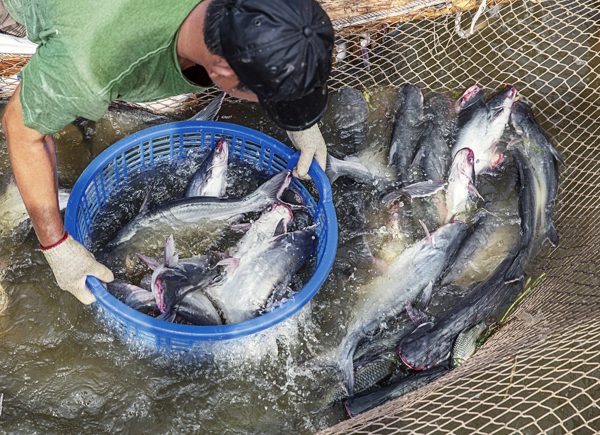- هذا الموضوع فارغ.
- الكاتبالمشاركات
- أبريل 11, 2025 الساعة 5:41 ص #625863

Catfish aquaculture plays a vital role in global food security, and maximizing production efficiency is crucial for meeting increasing demand.
While feed quality is a primary determinant of growth, the timing and frequency of feeding, known as feeding regimes, also significantly impact catfish yield. Furthermore, the strategic incorporation of growth promoters into these regimes holds the potential to further enhance growth performance and overall productivity.
This article explores the importance of optimizing feeding regimes in conjunction with the application of growth promoters to achieve enhanced catfish yield in aquaculture systems.
1. Understanding Catfish Feeding Behavior
Optimizing feeding regimes necessitates a thorough understanding of the natural feeding behavior of catfish. Factors such as age, size, water temperature, and dissolved oxygen levels can influence their feeding patterns and metabolic rates.
Younger, smaller catfish typically require more frequent feeding to support rapid growth, while larger fish may have lower metabolic demands and can be fed less frequently. Observing feeding responses and adjusting feeding schedules accordingly is essential for efficient feed utilization and minimizing waste.
2. Implementing Effective Feeding Schedules
Developing effective feeding schedules involves determining the optimal number of meals per day and the appropriate time intervals between feedings. Different feeding strategies, such as feeding to satiation multiple times a day or implementing restricted feeding schedules, can impact growth performance and feed conversion ratios.
The choice of feeding schedule should consider the specific life stage of the catfish and the overall management practices of the farm. Careful experimentation and data analysis are crucial for identifying the most beneficial feeding schedule for a given production system.
3. Strategic Application of Growth Promoters
Growth promoters, including substances like hormones, antibiotics (used judiciously and in accordance with regulations), and other performance-enhancing compounds, can be strategically integrated into feeding regimes to further accelerate growth rates and improve feed efficiency.
These promoters often work by enhancing nutrient absorption, stimulating metabolism, or influencing hormonal pathways related to growth. However, the use of certain growth promoters is subject to strict regulations due to potential environmental and consumer safety concerns. Therefore, careful consideration and adherence to best practices are paramount.
4. Synergistic Effects of Optimized Regimes and Promoters
The greatest gains in catfish yield are often achieved through the synergistic effects of optimized feeding regimes and the judicious use of growth promoters. When catfish are fed at appropriate times and frequencies that align with their physiological needs, the inclusion of growth promoters can further amplify their growth potential.
This integrated approach ensures that the fish are in an optimal state to respond positively to the growth-enhancing effects of the additives, leading to higher overall production and improved economic returns.
5. Monitoring and Adjusting Feeding Strategies
The effectiveness of optimized feeding regimes and growth promoter application must be continuously monitored and adjusted based on the observed growth performance, feed conversion ratios, and overall health of the catfish population.
Regular sampling, weighing, and analysis of production data are essential for identifying areas for improvement and fine-tuning feeding strategies.
Adaptive management practices that respond to the specific needs of the fish and the environmental conditions of the farm are key to maximizing catfish yield and ensuring sustainable production.
Optimizing feeding regimes in conjunction with the strategic use of growth promoters represents a powerful approach to achieving enhanced catfish yield in aquaculture.
By understanding catfish feeding behavior, implementing effective feeding schedules, applying growth promoters judiciously, leveraging synergistic effects, and continuously monitoring and adjusting feeding strategies, fish farmers can significantly improve production efficiency and contribute to the sustainable growth of the catfish aquaculture industry.
Read Also: Reasons why Catfish becomes Restless inside the pond: Signs, Causes and Control
- الكاتبالمشاركات
- يجب تسجيل الدخول للرد على هذا الموضوع.

